The current editor, Louis Hissink, is retiring after many years of valued service to the Institute in this role. Louis’s last edition will be AIG News 118, to be published in November this year. AIG News is read by more than 3,000 members throughout Australia and internationally.
AIG News is moving to being published as an electronic publication from the beginning of 2015. This transition creates an opportunity for the new editor to prepare a full colour publication and use new media in delivering information to AIG members. The newsletter is prepared in collaboration with the Institute’s Publications Committee which is responsible for reviewing content and assists the editor in proofing each issue prior to publication. The editor is responsible for sourcing and selecting content to be included in each issue from AIG members, State Branch committees and other sources.
An honorarium is associated with the Editor’s role.
Do you have a passion for geoscience communication? To express your interest, or seek further information, please contact Andrew Waltho, Chair, Publications Committee by email.
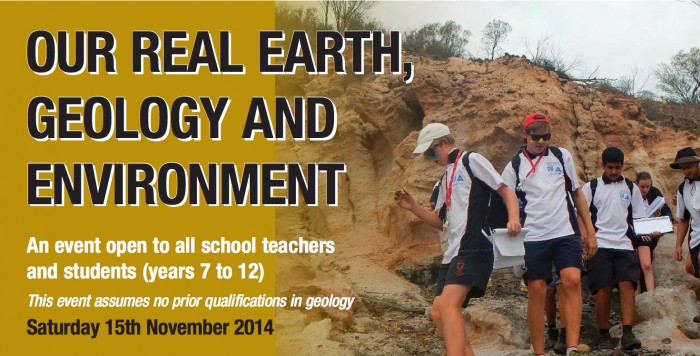
This event will present earth processes to school teachers and interested students, explaining what these processes mean for the economy, sustainability and environment. Teachers will be provided with materials and resources to assist future teaching activity. Both teachers and students will receive a certificate of attendance for their professional learning requirements and folio development respectively.
Speakers
Dr Phil Playford (formerly Director Geological Survey of Western Australia)
Prof. Ian Plimer (University of Adelaide)
Dr Simon Johnson (Project Manager Geological Survey of Western Australia)
Dr Rick Rogerson (Director Geological Survey of Western Australia)
Click here for the seminar brochure with full programme and registration information.
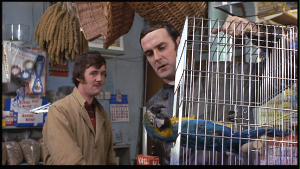
After almost 45 years this remains one of the world’s most famous complaints. Monty Python’s Flying Circus Season 1 – Episode 8, Recorded 25-Nov-1969
Few would not have seen the comedy sketch pictured here, where a customer seeks to complain to a shopkeeper regarding a dead but, in the shopkeeper’s eyes, still “beautiful” parrot. The sketch highlights conduct that doesn’t reflect well on the shopkeeper and would influence the parrot owner’s future decisions about whether to shop there again.
This may seem unrelated to the issue of professional ethics but this is arguably not the case. Ethical conduct is essential if there is to be confidence and trust in information provided by professionals and their actions in delivering services to employers, clients and the broader community.
Standards of professional conduct expected of AIG members are set out in the Institute’s Articles of Association and Code of Ethics. Instances of non-compliance with these standards are managed through a complaints process overseen by AIG’s Complaints and Ethics and Standards Committees.
AIG is able to perform its role as a professional institute by having a strong and enforceable Code of Ethics, which you, as an AIG member, agree to comply with as a condition of being admitted to membership the Institute. Members’ commitment to upholding the Institute’s Code of Ethics is confirmed through renewal of your membership annually. Compliance with AIG’s Code of Ethics is a requirement of all members irrespective of membership grade. This requirement extends to Graduates in the same manner as it does to Members and Fellows.
The Code of Ethics has changed little since it was written at the time the Institute was formed more than 30 years ago.
What has changed is the manner in which it is enforced. Complaints for many years were managed by the Ethics and Standards Committee which:
The Ethics and Standards Committee effectively acted as both the prosecutor and adjudicator – a process that became to be considered inherently unfair, despite members who were subject to adverse findings by the Ethics and Standards Committee had the right to appeal against any ruling to the Institute’s Council.
A two stage process was introduced in 2007 to address this shortcoming by forming a Complaints Committee which was assigned the role of investigating complaints referred to it by the Ethics and Standards Committee if there were grounds for doing so. The Ethics and Standards Committee assesses whether the a complaint is for a matter of a minor nature, which would result in the member being sent a letter detailing the Institute’s concerns, or deciding that a complaint was frivolous and dismissing it. More serious complaints are investigated by the Complaints Committee and the findings are submitted to the Ethics and Standards Committee for adjudication. The Complaints and Ethics and Standards Committees are independent, with no cross-membership.
This change removed any responsibility for prosecution of complaints from the Ethics and Standards Committee, putting it in a position to impartially consider complaints and evidence in defence of members alleged to have breached the Code of Ethics.
The concern underlying this change was one of ensuring procedural fairness which includes:
The complaints process is illustrated in the following diagram which is also available on the AIG website.
In short, an AIG member who breaches Canada NI 43-101 requirements for work undertaken in Canada or any other country will be dealt with in the same manner, and by the same process, that would apply for a breach of reporting requirements in compliance with the JORC Code in Australia.
AIG’s ability to enforce its Code of Ethics also ensures that the Institute may act, as required, against members who breach the code, and by doing so, potentially undermine public confidence in geoscience professions and practitioners. The Code of Ethics also sets standards of conduct for geoscientists with peers and other professionals that, again, help to maintain professional standards and relationships with other professionals.
The Code of Ethics sets out a number of requirements of members including:
This list is not complete, but serves to highlight the breadth of the Code of Ethics with respect to the professional conduct of AIG members.
The issue of giving credit to others, mentioned in the list above, is particularly relevant to both reports and publications. This form of recognition is important. Failure to recognise the contributions of others, or publishing material that is the work of another is, without doubt, ethically unsound. Similarly, republishing papers or articles in multiple journals, conference proceedings, websites or even newsletters is something that could invite a complaint, even when the material is one’s own work. Authors who publish work in journals or conference proceedings are, usually, required to assign copyright to the publisher. Reproduction of that work elsewhere, with no or simply cosmetic changes, could be construed to be an infringement of copyright which could become the basis of a complaint.
AIG members are prevented from describing themselves, or permitting them to be described, as consultants unless they occupy a position of independence and are able to act as an unbiased and independent adviser.
Acceptance of favours by members from a person or organisation who might deal with their employer or client is not permitted under the Code of Ethics. Corporate law in many countries may consider actions of this nature as bribery, exposing members to legal sanctions.
All AIG members are required to report perceived unethical conduct by other members. Not doing so constitutes a breach of the Code or Ethics.
Complaints must be lodged with the Complaints Committee. Only written complaints are accepted which may be submitted by mail to the AIG Secretariat office or by email (aig@aig.org.au). Any member or member of the public may submit a complaint. Making a complaint is, hoverer, not an onerous or unduly bureaucratic process. Making a complaint in writing provides a trigger for the Ethics and Standards Committee to decide whether an investigation is warranted, and for the Complaints Committee to proceed as required.
The Ethics and Standards Committee may also initiate complaints against members.
All complaints are dealt with in strict confidence although adverse findings against a member may be made public if this is considered to be appropriate by the Ethics and Standards Committee. This would not occur before the member concerned has had an opportunity to appeal an adverse finding by the committee.
Members are able to seek advice from the Complaints Committee as to whether matters they are aware of could represent unethical conduct. Enquiries may be made in writing, by email or verbally.
AIG’s complaints process is an important means by which the Institute seeks to maintain both professional standards and public perception of the geoscience professions in Australia. This constitutes “core business” for any professional body. The maintenance of appropriate professional standards is an area where all members contribute every day in the course of their work.
Andrew Waltho
Chair, AIG Complaints Committee
Work is progressing well towards the relaunch AIG’s technical publication, AIG Journal, later this year.
AIG Journal will provide a vehicle for the rapid publication of both technical and professional geoscientific research, concepts, experience and other information spanning all fields of interest to AIG members. The journal will be divided into two sections:
Papers and other contributions will be accepted from both members and non-members of the Institute. Further information regarding the journal’s editorial policy and submission of papers will be available soon, from the AIG Journal web site.
Being an on-line publication, the Journal will not adhere to a publication schedule. Papers will be published when they have passed the editorial and review process and been approved for publication by the Journal’s editorial panel. There are plans to produce a print-form compilation of all papers, letters and other articles published in the Journal on an annual basis.
A four member editorial panel has been assembled to manage the production of the journal.
Tracie has been a member of the AIG since 2001, she is an RPGeo (Mining) and is Geology Manager / Principal Geologist with AMC Consultants Pty Ltd.
Tracie commenced work in the early 1990’s in exploration. By the mid 1990’s she transitioned to mining, working as a mine geologist and specialising in technical computing, which morphed quickly into geological modelling and mineral resource estimation. Tracie has 15 years on site, in base metals, hard rock tin and gold, and has worked from underground mine geologist through to Geology Manager. She has a further eight years in consulting across underground operational reviews, project development, resource estimation and public reporting.
Tracie is an avid reader who will read anything if it stays still long enough. Science fiction and fantasy novels top the list however the odd romance (of the historical time traveling kind) has been seen to be quickly hidden from view. And there is no better place to read than outdoors at ‘Potterage’, her garden, which is dedicated to growing anything with stunning flowers.
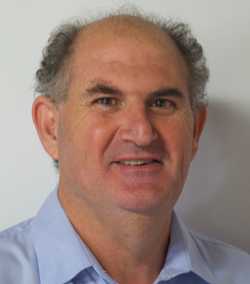
Phil is geologist with 30 years experience in mineral exploration, mining geology and petroleum exploration. He has also worked in the financial sector and information technology industry.
Phil’s exploration and mining geology experience spans a range of commodities including nickel, gold, iron ore, copper, and base metals in Western Australia, New South Wales and Queensland, working for junior, mid-tier and major resource industry companies.
Phil graduated from the University of Western Australia and is a member of AIG, GSA, the Financial Services Institute of Australasia, the Australian Drilling Industry Association and AGIA, the Australian Geoscience Information Association.
He currently lives in Brisbane where he works as a self-employed mineral exploration consultant. Phil brings broad technical and operations experience to his role on AIG’s editorial panel.
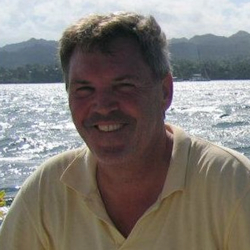
Nick is currently a Senior Fellow/Associate Professor in the School of Geography, Earth Science and Environment at the University of the South Pacific in Suva, Fiji.
He is a geoscientist with over 25 years’ experience in mineral exploration, natural resource management, geospatial information systems, teaching and research.
Nick specialises in the application of GIS, remote sensing and associated geospatial technologies to mineral exploration, natural resource management and cultural data management.
Nick’s experience includes working in private industry, local government, consulting and higher education. In the minerals sector, Nick has worked on exploration for gold, base metals, PGE, high purity quartz, micaceous hematite and uranium. This includes the use of remote sensing and GIS for target generation, lithological mapping, geological data management and 3D interpretation. In the environmental sector, Nick has experience in applying geospatial technologies to forestry, grasslands, soils, water quality, benthic environments, coastal zone, cultural information management, landscape futures, rehabilitation, hazard modelling and site selection. Nick has also written several geospatial software applications and is a Python devotee. Current interests include:
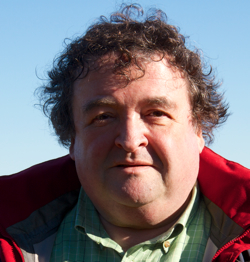 Andrew Waltho
Andrew WalthoAndrew is a geologist with more than 30 years experience in exploration and mining geology spanning a range of commodities in both Australia and overseas. He is currently Chief Geoscientist Energy and Minerals with Rio Tinto Exploration’s Project Generation Group, based in Brisbane, where he leads a small, globally focussed team working on new coal, uranium, unconventional gas, heavy mineral sands, potash, lithium, borate and other industrial mineral opportunities.
Andrew is a Fellow of both AIG and AusIMM, a Registered Professional Geoscientist in Exploration and Mining, a past-President of AIG and a current member of the Institute’s Council, and Chairperson of the Institute’s Publication and Complaints committees. Andrew is also a Fellow of the Geological Society, and a member of the American Geophysical Union (AGU) and the Society for Mining, Metallurgy and Exploration (SME).
His current interests include management of resource and geotechnical risks in exploration and resource evaluation by the incorporation of structural geological observations in geological models of mineral deposits and quantitative analysis of down-hole geophysical logging data. He is also keenly interested in geoscience education, including continued professional development by professional geoscientists and communication of geoscientific information, principles and ideas.
Expressions of interest to join the journal’s editorial panel from AIG members are welcome.
THE resource industry’s national gender diversity initiative, the Australian Women in Resources Alliance (AWRA), is calling for greater efforts to increase the number of women in male-dominated roles, following a recent decline in women’s workforce participation.
Latest employment data, released this week by the Australian Bureau of Statistics, reveals the number of women working in the resource industry fell from 15.5% of the total workforce to 13.9% in the year to May 2014.
Tara Diamond, executive director of the Australian Mines and Metals Association (AMMA) which is the peak body facilitating AWRA, says areas of the industry traditionally dominated by men should be the immediate focus of diversity-savvy employers.
“There are 37,000 women working across Australia’s mining, oil and gas sectors – about 3,400 less than 12 months ago,” Ms Diamond says.
“This decline shows that as the resource industry’s skills demands evolve, driven by many projects moving from construction into production, employers must focus on attracting and retaining women in their workforces.
“Specifically, the statistics show coal mining, metal ore extraction and quarrying activities have all gone backwards in terms of their gender balance over the past 12 months.
“While there are many successful efforts across the industry to attract and retain more women generally, achieving a gender balance in these site-based, male-dominated roles presents the greatest challenge.”
Interestingly, the ABS stats show the oil and gas sector is the only area of the resource industry where the proportion of women employees increased over the past 12 months. Since May 2013, an additional 1,800 women joined the sector, boosting its female participation to 23.5%.
To ensure other areas of the resource industry can follow the positive trend of the oil and gas sector, Ms Diamond points to increased engagement in programs delivered by AWRA to assist employers in building a greater base of female talent.
“We recently launched the AWRA Recognise Program, which is the resource industry’s first official assessment of gender diversity capability within an organisation. This allows employers to ensure their policies, procedures and practices attract women workers, increase retention and develop future leaders,” she says.
“Many resource employers have demonstrated commitment to addressing gender imbalance, but greater momentum is now needed to lift overall participation levels.
“There are many successful women working in the industry today, highlighting not just the opportunities available, but also what women can achieve through a rewarding career in the resource industry.”
AMMA media release, 21 August 2014.
AMMA (the Australian Mines and Metals Association) is the resource industry’s peak national employer group. The association has been serving the resource industry for more than 90 years, with our members comprising the majority of resource industry employers operating in Australia.
New isotope analysis facilities are amongst the capabilities of a new geologic clean laboratory at James Cook University.
This particle-controlled environment is used for preparation of geologic samples for analysis on the Neptune multiple collector inductively coupled plasma mass spectrometer (MC-ICP-MS) housed in the JCU advanced analytical center. The ability to chemically separate and concentrate elements of interest allows for determination of precise and/or low abundance isotopic ratios in a wide variety of samples.
In addition to a clean room environment, the lab features several specialized fume hoods that allow for complete digestion of silicate rocks. This lab is currently supporting projects spanning the geologic sciences, marine sciences, environmental science and archaeology and has already processed samples from six continents.
The lab is capable of high-precision determination of U-Th ages, as well as ratios of 87Sr/86Sr, 234U/238U, and 235U/238U.
For further information contact: Dr. Christa Placzek
From the August 2014 Economic Geology Research Unit (EGRU) newsletter, James Cook University, Townsville
The Queensland branch of the AIG together with the Australian Drilling Industry Association (ADIA) teamed up to present the latest Queensland Friday Seminar titled Drilling for Geology, on 1 August in Brisbane.
The seminar comprised twelve excellent talks that were split into three seminar themes i.e. planning and design considerations, drilling and related activities, and post-drilling issues. AIG and ADIA were pleased to have Drillpower Qld as the seminar sponsor, who brought a truck mounted multipurpose drill rig to the seminar for inspection by delegates over the lunch break. In addition, AMC Drilling Fluids and Products, Reflex Instruments, and CSIRO/Deep Exploration Technologies CRC all brought equipment for display and interaction by attendees.
In Session 1 (planning and design considerations), there were three talks. Wes Nichols presented on the role and responsibility of a Senior Site Executive (SSE) in the context of managing a drilling programme in Qld. Gerry Harth provided an overview of drillhole planning and design issues from a Qld government perspective, and Julius Marinelli talked about the development of leading practice drill pad designs.
In Sessions 2 and 3 (drilling and related activities), six presentations covered various aspects of the drilling process. Hannah Dwayne provided an overview of drilling methods used in the minerals industry. Bron Smolski talked about drilling for hydrogeology applications and Brent Delany focused on coal drilling. Stuart Addinell then presented the status of current research for developing a new water-powered percussion drilling method for deep drilling applications. Angus Forbes gave an educational talk on the types of drilling fluids and additives available, and this theme concluded with a presentation by Luke Hudson on down-hole survey systems and XRF analysis tools.
Session 4 dealt with post-drilling issues. Glenn Pears presented a talk on the use of down-hole rock properties in geological and geophysical interpretation. David Green gave an update on the CoalLog project being funded by the Australian Coal Association Research Program (ACARP) to improve the collection of coal borehole data. The final talk was given by Mark Berry looking at the importance of collecting accurate measurements of drill core recovery and percussion chip recovery and moisture for resource estimation purposes.
In all, fifty five participants comprising tertiary students, graduates and geologists with over 20 years experience attended the seminar and reported that it was a valuable professional development experience. All of the presentations have been uploaded to the AIG website for reference purposes.
This summary was prepared by the seminar organising committee of Melissa (Mell) Greenall from the ADIA, and Clem Hill and Mark Berry from Queensland AIG.
Recently the WA branches of AIG & ASEG participated in the annual Hale / St Mary’s Careers Expo. The night was well attended with exhibitors from local universities and various sectors including finance, hospitality, medicine, real estate, law, health, police, and GEOSCIENCE!
This year marked our third year at the event and although it was a stormy night, many students benefitted from the displays and advice given by the exhibitors.
We look forward to an ongoing presence at career events like these, which give us the opportunity to encourage students to study math and science!
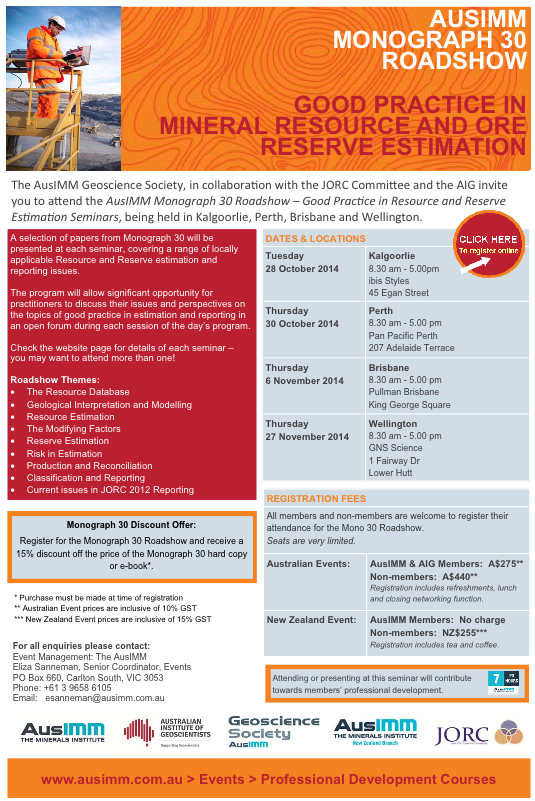 The AusIMM Geoscience Society, in collaboration with the JORC Committee and the AIG are hosting an AusIMM Monograph 30 Roadshow – Good Practice in Resources and Reserve Estimation roadshow, throughout Australia and New Zealand during October and November.
The AusIMM Geoscience Society, in collaboration with the JORC Committee and the AIG are hosting an AusIMM Monograph 30 Roadshow – Good Practice in Resources and Reserve Estimation roadshow, throughout Australia and New Zealand during October and November.
A selection of papers from Monograph 30 will be presented at each seminar, covering a range of locally applicable Resource and Reserve estimation and reporting issues.
The program will allow significant opportunity for practitioners to discuss their issues and perspectives on the topics of good practice in estimation and reporting in an open forum during each session of the day’s program.
Roadshow Themes include:
Registrations for the roadshow are now open. For more information visit the roadshow website, or refer to the roadshow flier.
According to the U.S. Bureau of Labor Statistics, the current young professionals work group (up to age 35), commonly referred to as “millennials” or “Gen Y’ers”, spends an average of 1.8 years in a job before moving on. At any one time, 60% of this group are looking for new career opportunities while still employed.
Career and lifestyle aspirations are even more important to them than pay or their relationship with their managers. In addition, millennials do not need to be highly dissatisfied with their current job to make a change. If something more attractive comes across their radar screen, in the way of career advancement or lifestyle aspirations, they will leap, regardless of how long they have been with their current employer.
Many companies are confused about how to successfully attract, engage, and retain millennial employees for long enough to train them to take over from aging “boomers”. However, some “early adopter” companies seem to be getting it right by creating a work environment that promotes flexible work-life arrangements and offers career support to address just these issues. Career support in this context includes leadership development, career planning and mentoring.
A cost-effective way for mining companies to provide this type of career support is through the availability of appropriate elearning. Some mining companies already provide elearning as on-demand online courses that can be taken at the employee’s initiative; others provide it as structured programs of online courses with more clearly defined training objectives. Either way, the results can satisfy both employee and corporate requirements.
From the employee point of view, provided the selection of courses is sufficiently large and the quality is acceptable, the benefits include career development, satisfaction of CPD (continuing professional development) obligations and, if the courses are accredited, accumulation of credit towards university programs.
From the corporate point of view, the benefits include improved employee retention, employee knowledge and skills development, and achievement of corporate training objectives.
For more on the topic of employee retention through provision of career support see Stop the Gen Y Revolving Door (B.L. Ware (2014)).
AIG members have access to a dedicated Edumine campus that provides access to the full-range of e-learning resources that Edumine offers. For more information visit the Edumine Campus page of the AIG web site. Edumine Campus enrollment is managed through the AIG membership portal.
 Simon Houlding
Simon Houlding
Vice President Professional Development, InfoMine Inc., Vancouver CA.
Simon is responsible for EduMine, the professional development division which provides learning and training programs to the global mining industry. He is a practicing professional engineer and author.
This article was originally published on the Infomine web site www.infomine.com and appears here with permission.